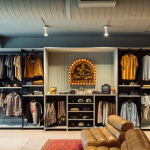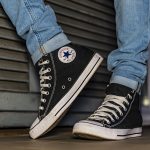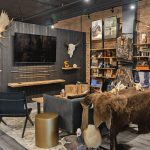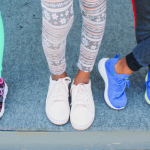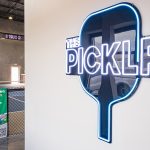Foot Locker, Inc. saw the U.S. business remain a challenge in the fiscal third quarter, but also saw some improvement on a quarter-by-quarter sequential basis in both the U.S. and European businesses. The U.S. weakness was also cited as the primary reason why the company’s EPS fell short of the third quarter last year.
Third quarter adjusted earnings per share were said to be within the range of the company’s expectations going into the quarter, but fell “a few cents below the Wall Street consensus estimate.”
Comp store sales decreased 8.2% for the quarter ended Oct. 31, with August comping down in low double-digits, September comps down in mid-single digits and October comps falling in low double-digits.
The combined Foot Locker U.S. business, which includes the Foot Locker, Lady Foot Locker, Kid’s Foot Locker, Champs and Footaction nameplates, posted a low double-digit decrease for the quarter in both athletic footwear and athletic apparel.
Sales declined across each region of the U.S., with weaknesses reportedly “fairly consistent” across urban and suburban areas and both inside and outside the mall. Both the men’s and women’s businesses posted declines for the period, but women’s was again weaker than the men’s side. The profitability of the U.S. also apparently underperformed expectations for the period.
Sales were weak in basketball and running, which were described as the retailer’s two largest men's categories and representing a “large percentage” of the footwear business. Sales gains came from some big programs in key marquee assortments, the lifestyle category and premium classics.
Ken Hicks, the retailer’s newly minted chairman, president and CEO said posted gains came from Jordan Retro product, Griffey, Kobe and LeBron endorsed footwear, Hyperize and Hyperdunk styles, and some specific Nike Max Air styles. In the lifestyle category, the strong sellers were said to include Nike Sweet Classics and Santa Cruise, Adidas Top Ten, and Converse Chuck Taylors. In the premium classics category, Hicks said they posted gains in Nike Big, Prestige and Blazers. The average footwear selling prices in the U.S. increased low-single digits, which Hicks said reflected “a continuing shift towards more stable prices and lower markdown rates.”
The apparel business in the U.S. was described as “very tough” throughout the quarter. Hicks said that improving the apparel business, over time, is a significant sales and profit opportunity for the company. He said that apparel is an area that will be receiving considerable focus in the months ahead.”
Comp store sales at Footlocker.com/Eastbay decreased high-single digits for the quarter. Total sales of this division, including the newly acquired CCS business, increased high-single digits. Sales in the segment improved versus the second quarter, but were described as disappointing by management. Division profit of the DotCom division decreased slightly from the prior year, reflecting the sales decline. The division profit margin rate of the core Footlocker.com/Eastbay business was said to be “very healthy, in the high-single digit rate.” The EBITDA margin of CCS is expected to be double digits for the full year.
Hicks said they continue to pay close attention and be encouraged with the sales results of the two test CCS stores that opened earlier this year in Santa Monica, CA and the Garden State Plaza in New Jersey. Based on the initial results of those two stores, FL plans to expand the test in 2010.
On the international front, Europe comped flat for the quarter in both the footwear and apparel categories, but management said the comp store sales trend in Europe improved versus the spring season. The business was said to be the “most encouraging in October,” with a high single-digit sales gain for the month in both the athletic footwear and apparel categories. The October sales trend improvement reportedly occurred in almost every country where Foot Locker has stores, with “very meaningful gains in the larger markets of Italy, France, Germany and the U.K.”
Sales and profit results at Foot Locker Canada were described as “fairly stable” versus the third quarter of last year, with comps decreasing low-single digits. Hicks reported that Foot Locker Canada's division profit margin continues to run in the low double-digit range for both the current quarter and year to date periods.
Foot Locker Asia-Pacific, which includes Australia and New Zealand, exceeded both their sales and profit results of last year in posting a mid-single digit increase for the period. Hicks said they expect the Foot Locker Asia-Pacific division to post record profit results this year, with the high single-digit division margin rate.
The retailer’s third quarter gross margin rate was essentially flat with last year, reflecting a 90 basis point increase in the merchandise margin rate and a 90 basis point decline in the buying and occupancy rate, reflecting the impact of lower sales.
Foot Locker, Inc. ended the quarter with 3,601 owned stores, reflecting 33 new stores and 73 closed stores for the year.

